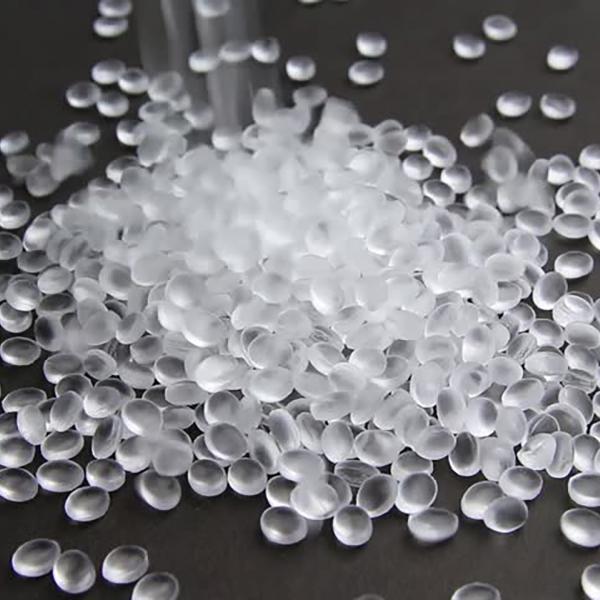Description
ZARLNKTM XL4423 is a cross linkable natural polyethylene compound based on Supercure technology and a one-part Silane cross linkable insulation system, specially designed for insulation applications.
Polyethylene is used to manufactured compounds using the SILOXAN one-component system, a Silane crosslinking system developed by KABELMETAL ELECTRO GmbH. This process utilizes a special system that allows the additives and Silane to be homogeneously compounded with polyethylene pellets. The resulting compound is thermoplastic in nature that can be extruded, using normal extruding equipment and conditions, into the finished product. Curing of the finished product is done in the presence of moisture.
Applications
ZARLNKTM XL4423 is intended for insulation of XLPE Low voltage (LV) AC cables with rated voltages up to 3 kV (Um = 3.3 kV).
Specifications
ZARLNKTM XL4423 is expected to meet the applicable requirements included in the below mentioned standards provided it is processed using sound material handling, extrusion and crosslinking practices as well as appropriate testing procedures. This applies up to the maximum recommended voltage level indicated in “Applications” section above since some standards cover wider voltage ranges.
- IEC 60502-1
- VDE 0271 – 0273
Special Features
ZARLNKTM XL4423 is a ready-to-use natural compound. Thanks to its inherent properties, ZARLNKTM XL4423 provides very good electrical performance. It offers excellent scorch resistance and long production runs. ZARLNKTM XL4423 cleanliness level is assured through the Borealis quality management system.
Physical Properties
| Property | Typical Value | Test Method |
|---|---|---|
| Density (Base Resin) | 0.93 gr/cm3 | ISO 1183 |
| Melt Flow Rate (190’C , 2.16 kg) | 1~ 2 gr/10 min | ISO 1133 |
| Elongation at Break (250 mm/min) | >300 % | IEC 60811-401 |
| Tensile Strength (250 mm/min) | 15 N/mm2 | IEC 60811-401 |
| Hot set test (200’C , 20N/cm2) Elongation under load | 60 % | IEC 60811-507 |
| Permanent Elongation | 5% | “ |
| Retention of Tensile strength after aging (240h , 135’C) | >= 25 % | IEC 60811-1-2 |
| Brittleness temperature | < -76 ‘C | ASTM D 746 |
| Environment stress crack resistance (50’C) Igepal 10%) F20 | >96 h | IEC 60811-4-1/B |
| Hardness , Shore D (1s) | 52 | ISO 868 |
Data should not be used for specification work
Electrical Properties
Data should not be used for specification work
| Property | Typical Value | Test Method |
| Dielectric Constant (50Hz) | < 2.3 | IEC60250 |
| DC Volume Resistivity (23’C) | 10 P Ohm.cm | IEC 60093 |
| Dissipation Factor (50 Hz) | < 0.0005 | IEC 60250 |
| Dielectric Strength | 22kV/mm | IEC 60243 |
Processibility of Compounds
To produce a good and reliable cable, it is essential to ensure careful and very clean handling of the insulation material. Hence all material handling should preferably be conducted in closed systems and in clean room conditions.
Crosslinking
Can be cross-linked by immersion in hot water or exposed to low pressure steam at a temperature of 90°C .It is good practice to purge stranded aluminum conductors with air or nitrogen during crosslinking to prevent conductor corrosion. The time period needed and maximum temperature will depend on e.g. the thickness of insulation, type of semiconductive screen and reel size.
* Processing conditions and precaution
(1) Extrusion Equipment
(a) L/D ratio 20/1-26/1. PVC or PE extruders are suitable with 3-3.5 compression ratio.
(b) For tube extrusion, the recommended Draw Down ratio is<1.5:1.
(c) Screen mesh: at most 40/60; Stainless steel screen is recommended.
(d) Cooling water temperature to be > 30oC.
2) Typical temperature Setting oC
| Feed | Compression | Metering | Neck | Die Head | Die |
|---|---|---|---|---|---|
| 150-160 | 160 – 180 | 180 – 200 | 190 – 210 | 210 – 230 | 240-280 |
3) Preheating
(a) Under normal conditions, preheating is unnecessary.
(b) Preheating (60oC/1 hrs.) during cold weather may be required to increase line speed.
4) Start Up
(a) Ensure extruder is thoroughly cleaned.
(b) The temperature of the exiting material is measured at the mouth of the extruder (180 – 200oC).
(c) Stop the screw and fix the die onto the extruder.
(d) Connect the conductor to the capstan.
(e) Turn on the screw speed and increase it significantly for a few seconds while allowing the material to bleed.
(f) Slowly turn up the line speed until it reaches desired speed.
DO NOT LEAVE THE MELT IN THE EXTRUDER FOR MORE THAT 20 MINS!
5) Gas Flame
Use of a gas flame directed at the die will ensure a smoother surface and minimize the accumulation of die drool.
6) Curing
( a ) Curing time depends on temperature , thickness of insulation , cure time and presence of moisture.
( b ) Typical curing conditions for normal insulation ( 1.5 mm insulation thickness ).
| ambient | 80%RH, 28oC | 15 days |
|---|---|---|
| steam | low pressure | 3 hours |
| hot water | 80oC | 3 hours |
7) Materbatches
It is recommended that color Materbatches be thoroughly dried before use i.e. at 60-70oC for 48 hours.
Packaging
- Aluminum bags (25 kg)
- Small Bins (550 kg)
Storage
ZARLNKTM XL4423 has a shelf life of 12 months from delivery date if stored in unopened original packages, under dry and clean conditions at temperatures between 10 – 30 °C.
Before use, material shall be conditioned indoors (production room) to reach ambient temperature. It is also recommended to ensure proper stock rotation by First In – First Out principle.
Related Files:
| Attachment | Size |
|---|---|
| ZARLNK XL4423.pdf | 155.41 KB |
